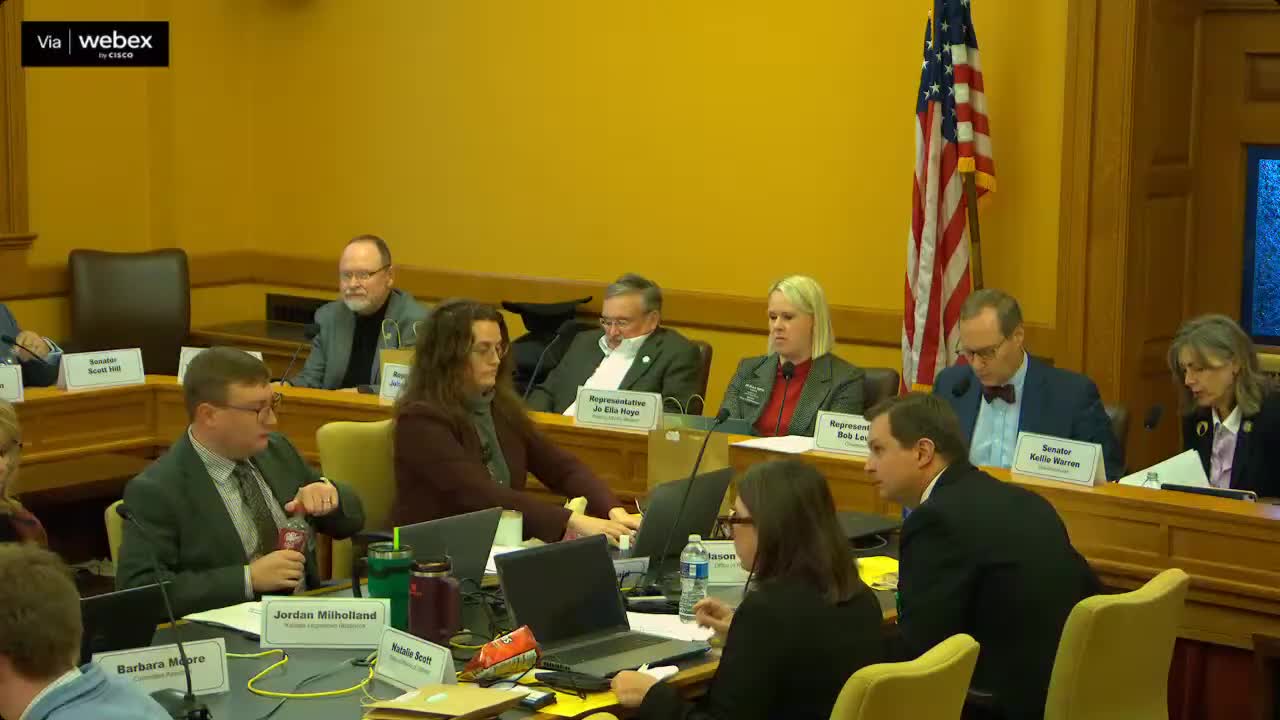Sentencing Commission projects steady prison growth; urges attention to treatment, RAFT and MAT
November 06, 2025 | Joint Committee on Corrections and Juvenile Justice Oversight, Joint, Committees, Legislative, Kansas
This article was created by AI summarizing key points discussed. AI makes mistakes, so for full details and context, please refer to the video of the full meeting. Please report any errors so we can fix them. Report an error »

Scott Schultz, executive director of the Kansas Sentencing Commission, told the joint committee the agency’s 10‑year prison population model shows an increase that will create bed pressure unless policy or population trends change. He summarized the commission’s purpose, the sentencing guidelines framework and how the agency uses sentencing and corrections data to produce monthly and 10‑year projections.
Schultz said the commission’s modeling projects roughly 2,530 additional beds over a 10‑year horizon under current policy and population assumptions, which translates to roughly 1,365 beds beyond current capacity. He noted the projection’s monthly model performs within acceptable error bounds and that FY28 is an early pressure point under the current projection assumptions. He urged lawmakers to consider “prison, bed, space, impact” — in his words a four‑word frame for weighing criminal policy changes.
On data modernization, Schultz said the Sentencing Commission implemented the Kansas Sentencing App (KSAP) in October 2024 to accept electronic sentencing journal entries and improve case‑level data available for analysis. He said improved data collection helps the commission give better bed‑space impacts for bills that create or modify criminal penalties.
Schultz also described the Sentencing Commission’s role administering treatment funding under Senate Bill 123: the commission operates post‑conviction and diversion SUD (substance use disorder) treatment funding, the RAFT diversion program in counties that opt in, and SB123 Plus (a nondrug expansion). He said methamphetamine remains the primary diagnosed substance for participants and that the commission added medication‑assisted treatment (MAT) coverage for opioid diagnoses in the most recent year, a step backed by evidence that MAT reduces relapse and mortality.
Why it matters: The commission’s projection is a widely used planning tool for corrections capacity, and the SB123/RAFT programs link sentencing to community treatment options. Committee members asked about recent month‑to‑month population swings and how legislative changes or increased community programming affect bed projections.
Schultz said the commission’s modeling projects roughly 2,530 additional beds over a 10‑year horizon under current policy and population assumptions, which translates to roughly 1,365 beds beyond current capacity. He noted the projection’s monthly model performs within acceptable error bounds and that FY28 is an early pressure point under the current projection assumptions. He urged lawmakers to consider “prison, bed, space, impact” — in his words a four‑word frame for weighing criminal policy changes.
On data modernization, Schultz said the Sentencing Commission implemented the Kansas Sentencing App (KSAP) in October 2024 to accept electronic sentencing journal entries and improve case‑level data available for analysis. He said improved data collection helps the commission give better bed‑space impacts for bills that create or modify criminal penalties.
Schultz also described the Sentencing Commission’s role administering treatment funding under Senate Bill 123: the commission operates post‑conviction and diversion SUD (substance use disorder) treatment funding, the RAFT diversion program in counties that opt in, and SB123 Plus (a nondrug expansion). He said methamphetamine remains the primary diagnosed substance for participants and that the commission added medication‑assisted treatment (MAT) coverage for opioid diagnoses in the most recent year, a step backed by evidence that MAT reduces relapse and mortality.
Why it matters: The commission’s projection is a widely used planning tool for corrections capacity, and the SB123/RAFT programs link sentencing to community treatment options. Committee members asked about recent month‑to‑month population swings and how legislative changes or increased community programming affect bed projections.
View full meeting
This article is based on a recent meeting—watch the full video and explore the complete transcript for deeper insights into the discussion.
View full meeting
